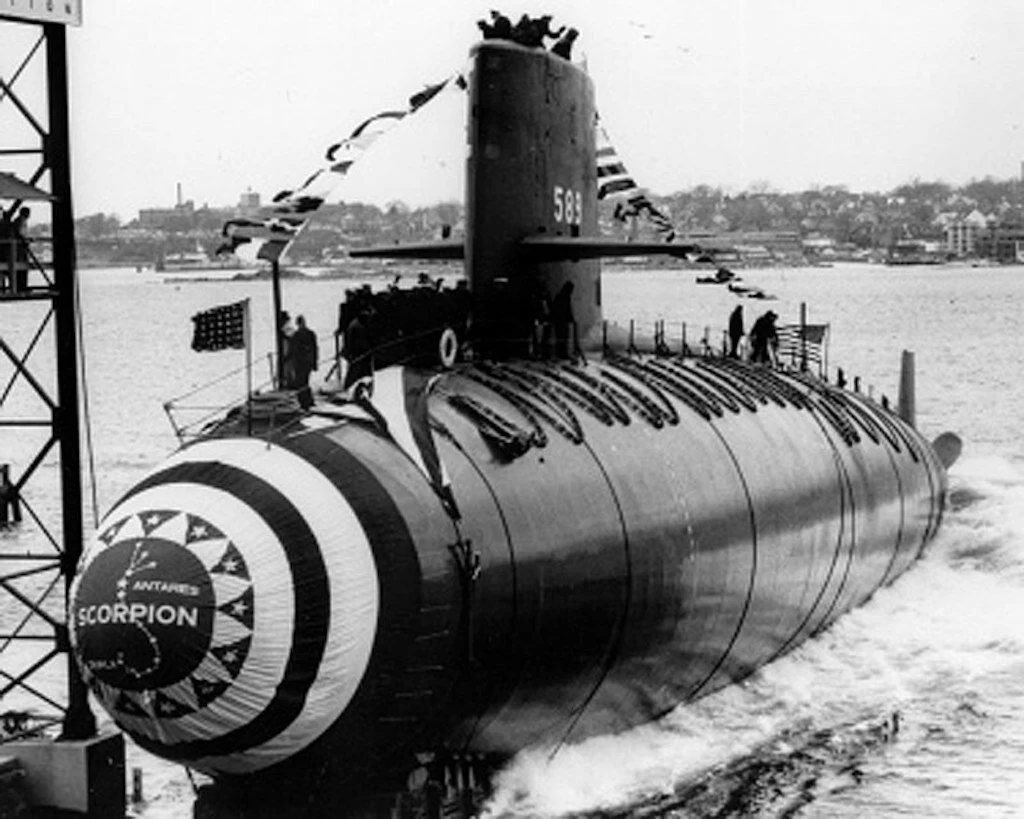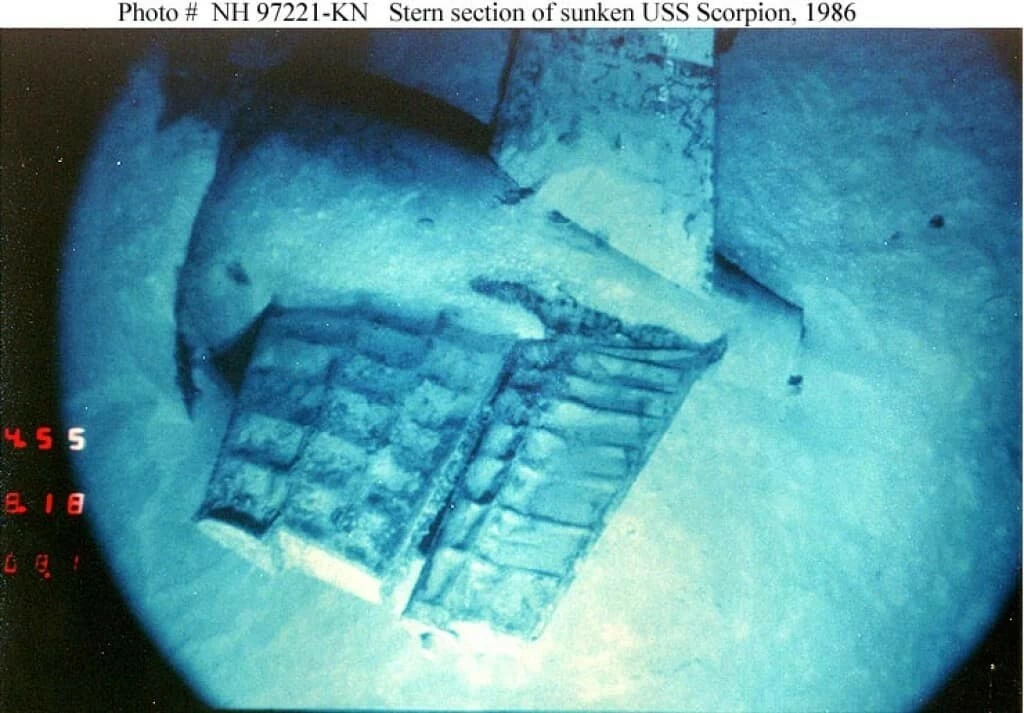The USS Scorpion was a Skipjack class nuclear-powered submarine that mysteriously sank in 1968. The circumstances of her sinking have been questioned by many, ever since the day she didn’t return home. Her subsequent discovery lent very little in the way of answers.

The USS Scorpion was built by the Electric Boat Division of General Dynamics in Groton, Connecticut. She was 251 ft. long and required a crew of eight officers and 85 enlisted men. The submarine was launched on December 29, 1959. It was commissioned on July 29, 1960, and put under the command of Commander Norman B. Bessac. Her home port was in New London, Connecticut.

The USS Scorpion’s first deployment was for the sake of carrying out exercises with other NATO navies. She was deployed on August 24, 1960, and was gone for two months. Upon the ship’s return to New England, she commenced training off of the east coast of the United States, which continued for more than six months. After the training was complete, the Scorpion went overseas once again. Her home port was changed from New London, CT to Norfolk, Virginia at that time.
The USS Scorpion continued to be involved in training exercises in various locations until she was sent for an overhaul in June of 1963. For several months, during the two years that followed the overhaul, the submarine participated in patrols in the Atlantic Ocean. Following these patrols, she was deployed twice in 1964. Several of her crewmen were given citations for their conduct while carrying out these missions.
Three years later, she went in for another overhaul and subsequently underwent refresher training and weapon system acceptance tests. She was deployed once more on February 15, 1968. This time, the Scorpion was sent to the Mediterranean Sea. On May 21, 1968, the crew of the Scorpion sent word that they were roughly 50 miles south of the Azores Islands. Six days later, on May 27, it was noted that she was late for her scheduled arrival in Norfolk. Searches, which eventually consisted of more than 50 ships and subs and dozens of aircraft, were conducted immediately.
A court of inquiry into the sub’s disappearance was convened on June 5, 1968; the ship was also “presumed lost” that day. Most of the hearings conducted by the court were closed to the public and much of the information that they gathered is still top-secret. The court went over the sub’s entire history, searching for possible clues to the cause of the sub’s disappearance. Could there have been some kind of malfunction aboard the Scorpion? Was it possible that the submarine had come under enemy fire? A more than 1,800-page report was submitted two weeks later, but the question of what happened to the Scorpion remained unanswered.
The Scorpion was discovered by a naval oceanographic research ship called the MIZAR (T-AGOR11). Parts of her broken hull were photographed in 10,000 plus feet of water, roughly 400 miles southwest of the Azores. These photographs and other information were evaluated by the court. However, it was concluded that the new evidence did not shed light on the cause of the submarine’s sinking.
Twenty-five years after the loss of the USS Scorpion and her 99 man crew, parts of the findings of the inquest became declassified. This new information indicated that the Navy believed that the Scorpion had accidentally launched one of its own torpedos and that torpedo had honed in on and sank the USS Scorpion.
However, there have been claims from former sailors that they were aware that the submarine was being followed by a Soviet sub, which the crew could not shake. These men believe that the Scorpion was sunk by that sub. This is also backed up by claims that the Scorpion had been sent to spy on Soviet craft near the Canary Islands. None of this is for certain, however. The fate of the Scorpion and her crew remains a mystery.
Sources
HistoryNet, The USS Scorpion Buried at Sea, retrieved 11/20/09.
Navysite.de, USS Scorpion (SSN589), retrieved 11/20/09.